STUDENTS PROJECTS
PROJECTS2012
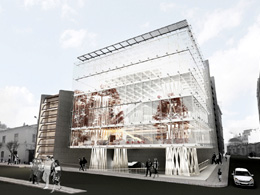
11 March, 2013
Digital Information Center. Reading hall in Athens
Our diploma project consists a research around a new type of library building to which we refer as a digital information center and reading hall for the city center.
Students : Vaginakis Manos, Papadopoulou Maria
Professors: S. Gyftopoulos, Α. Κourkoulas
Diploma project / School of Architecture NTUA
Presentation date : July 2012
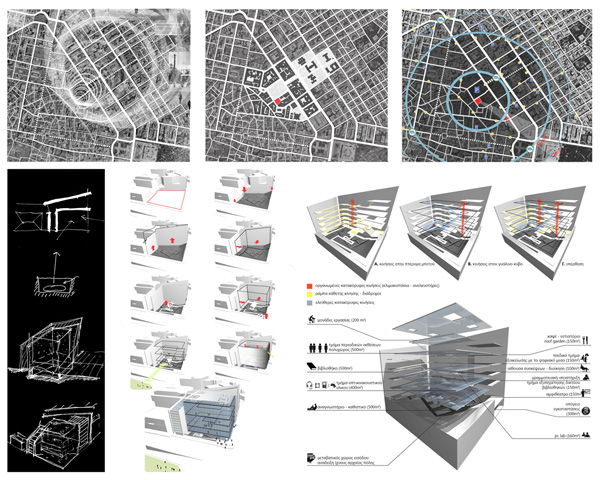
Our intention is to design a building of public character, which appeals to the need of the modern resident to come across a living area in the heart of the city , which will provide them with the right conditions for both access to information and to collaborative work and social contact. Therefore, we considered an empty lot adjacent to Klafthmonos Square (and within very close distance to Karytsi and Syntagma Squares) as an ideal one.
The whole idea for the building project stems from thorough study about the building of a library itself. The prominent issues to be examined were the role of a library building in modern society -and specifically the Greek one- and its function as a space, given the fact of the transitional phase we are experiencing from the era of the printed book towards the digital era. The book, is undoubtedly dematerialized, since it is now a digital good, a fact that eliminates the need for its' preservation in the real space. Based on this axiom, the idea of creating a building for the storage and "consumption" of information in a printed form, certainly consists an anachronism for both the contemporary and the future society.
While leaping to a second level of analysis of the aforementioned issues, one could observe that the new technologies related to information have clearly contributed to the change of the perception of spatial structures and the way in which built space is experienced. The contemporary library as a source of information could be as simple as a broad platform that enables and configures the conditions for the utilization of information and the cooperation and coordination of the existing libraries and other information units. The building-platform seeks to redefine the terms of communication between the user and the information source through forms of cooperative interplay between networks, but also communication between the final users.
In this context the synthetic decisions were given shape. We focused on the objective of ensuring contact between the building and the city fabric, as well as among its users. Both the "external" and the "internal" communication were expressed by the desire for transparency of the building shell. The space syntax was morphologically realized through a transparent glass cube where events and constant flows take place.
The main question, however, throughout the whole investigation, remained the existence of the information in its' conventional form, the form of the typed book and how this fact would affect the activity of the building.
A modern library building is inevitably called to house the real and the virtual world, materiality and non-materiality. So, ultimately, the entire synthetic process was structured on a dipole; form file - digital file. This was also reflected in the synthetic gestures; line - rectangular, narrowly defined plan - open floor plan, forced traffic - free traffic and was furthermore expressed through the choice of the materials; concrete - glass.
The main synthetic initiative features the creation of two groups of distinct spaces. The first one, where old and precious books are kept, represents the storage of information in the conventional sense. Furthermore it is the site where the conventional functions of the building. It is the point where material and memory are met, which the users perceive through a spiral movement around the storage of the books. On the other hand, the second site represents the intangible, the contemporary, and offers the possibility for utilization of information and the development of social contact. It is an open space, a bright one ,where gaze, movements and flows of information intersect.
Another peculiarity of the building was the location of the plot. As already mentioned, at Klathmonos Square and over the path of the ancient city wall, where the likelihood of existence of Ancient remains is increased. This issue contributed to a major decision: the box, the glass cube should hang over the possible finds, a fact which also strengthened the desire for transparency of the cube. A further matter arising was the structural system that would give the cube the sense of suspension. After elaborating various scenarios, we finally came up with four metal pillars of large caliber that would create an enhanced structural zone inside the glass box.
Undoubtedly, the grade of the cube shell's transparency posed various issues regarding the building's thermal performance. For this reason we chose to apply a double skin of glazing. The two glazed surfaces are positioned at a distance, enough to permit the uninterrupted circulation of cool air between them. This is enhanced by the opening of the inner panes (double glazed, infilled with argon gas and low emissivity coatings), in order to create the chimney effect. In order for overheating and glare to be avoided, we chose to stop the influx of solar radiation on the outer glass skin. Towards this direction, the solution of hybrid dynamic glazing is adopted, the optical properties of which vary passively (they become translucent) when hit by increased direct solar radiation.
Making an overview of the proposal, the digital information center / reading hall incarnates multiple roles into its' core, such as that of an education facility, a place making people familiar with technology, a social condenser, a centre of cultural and touristic interest. Definitely, the proposal constitutes the introduction of an innovative building application to Athens and its' society,able to become another landmark for the city and helping to attract interest for a concerted upgrading of the region.
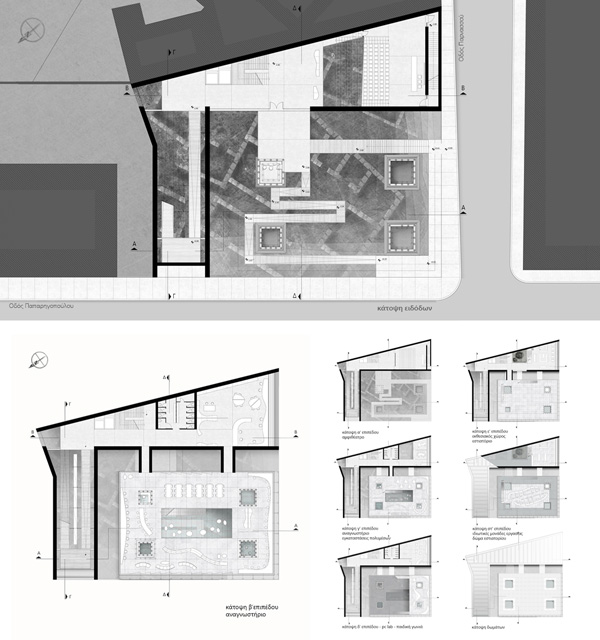
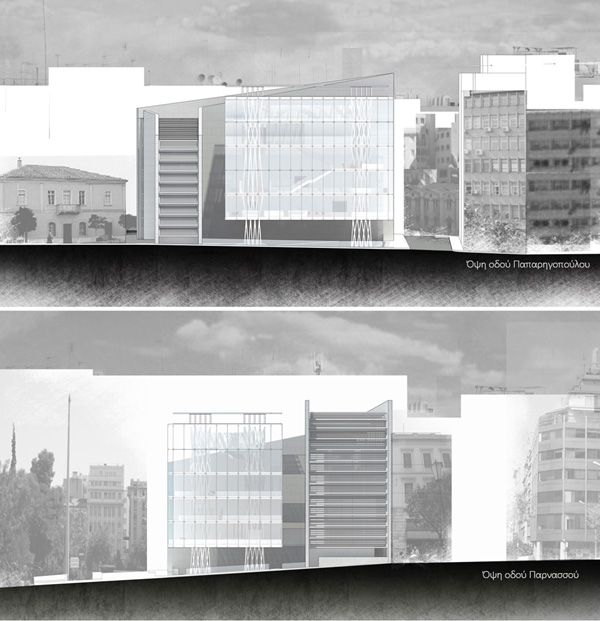
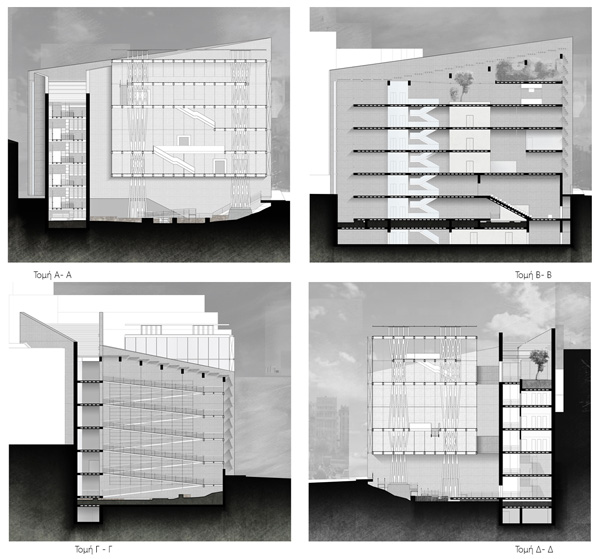
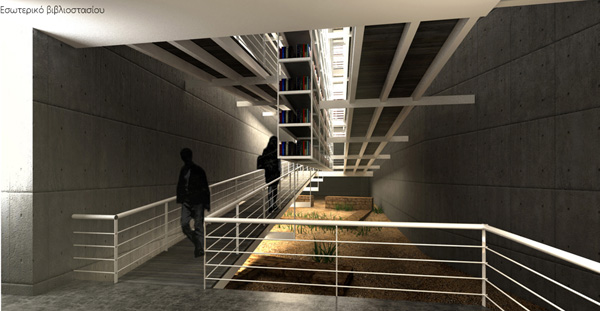
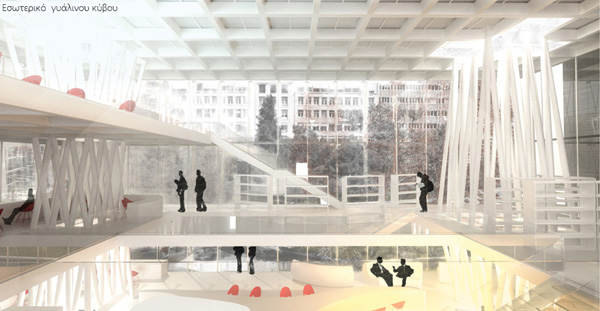
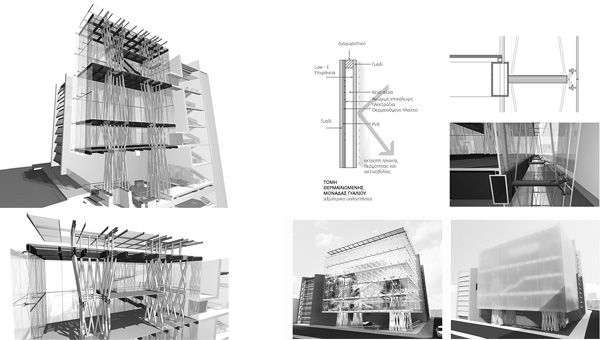
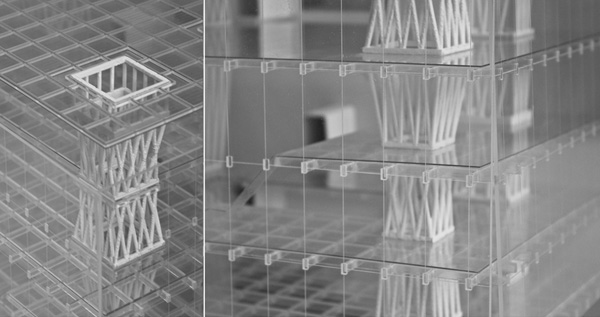
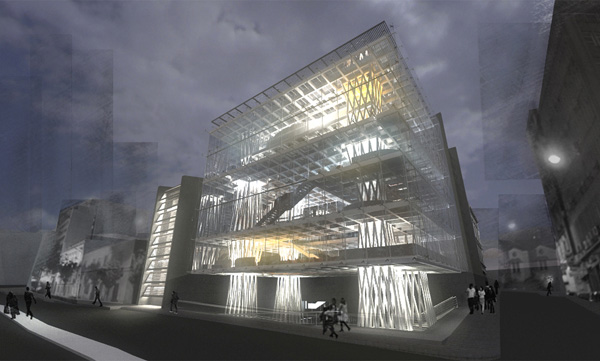
Related articles:
- Five metal cubes ( 30 August, 2010 )
- New building for the Main Library, Aristotle University of Thessaloniki ( 20 April, 2010 )
- Hockessin Public Library ( 01 November, 2010 )
- New National Library of Athens ( 07 March, 2012 )
- Cyprus Library within the walled city of Nicosia ( 05 February, 2012 )
- Cassia Coop Training Centre ( 07 November, 2012 )
- Mediatheque ( 27 March, 2013 )
- Public Library at Kalamaria ( 04 April, 2015 )
- The Pinch ( 03 , 2019 )
- The Liyuan Library ( 02 April, 2015 )










